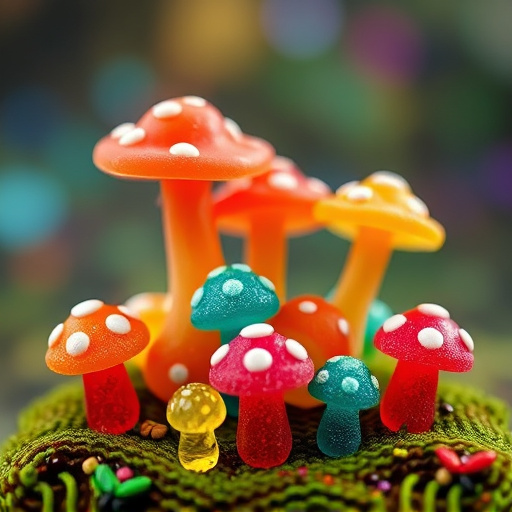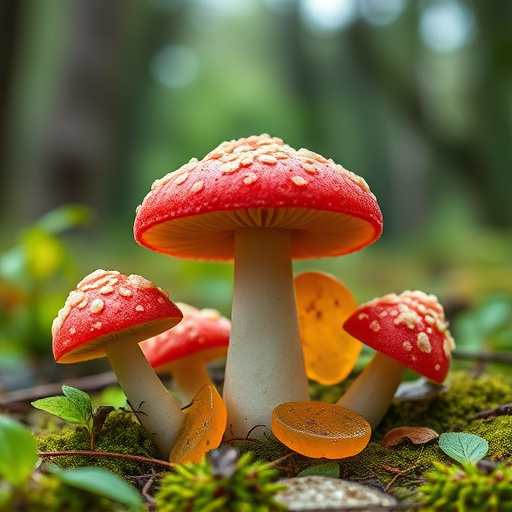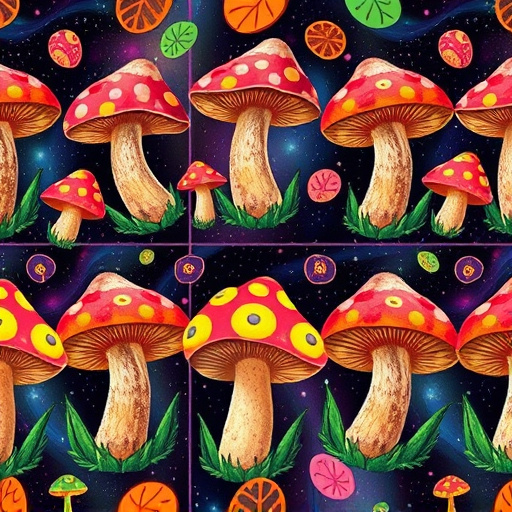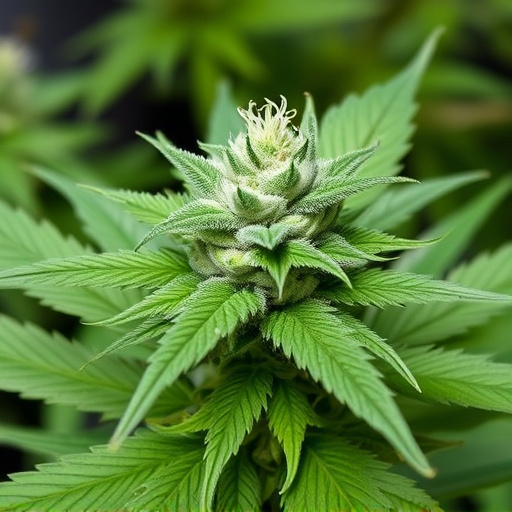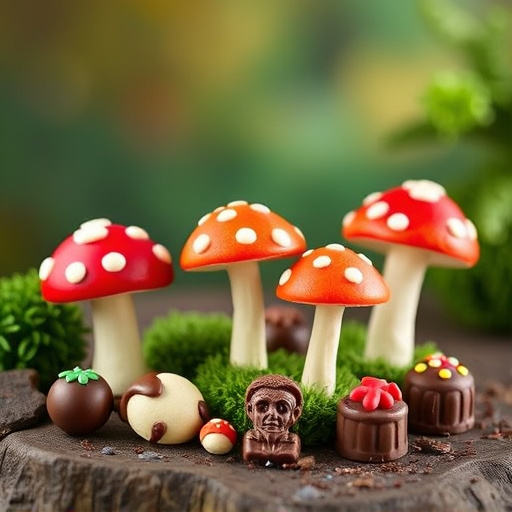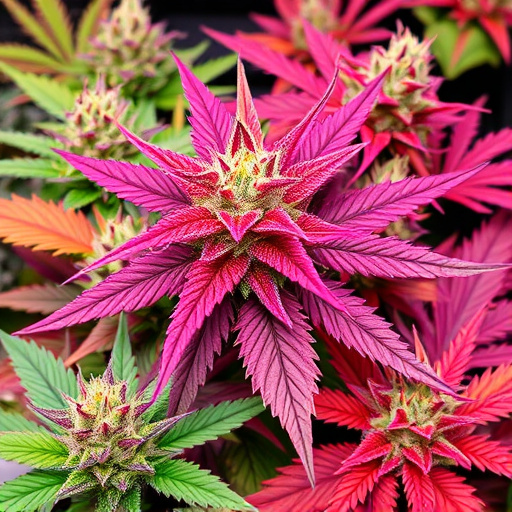Unveiling the vibrant colors of colorful marijuana strains involves understanding their genetic makeup and molecular basis. Key genes producing anthocyanins, pigments responsible for hues, can be manipulated by breeders to create diverse colored strains. Environmental factors like sunlight, temperature, and nutrients also impact pigment production, leading to striking color variations. Cultivators use advanced techniques, including LED lighting and meticulous care, to produce unique, visually stunning colorful marijuana strains with specific characteristics and potential therapeutic benefits.
Discover the captivating world of colorful marijuana strains, featuring vibrant hues of purple, red, and blue. This phenomenon isn’t just about aesthetics; it’s driven by a fascinating interplay between genetics and environment. Unravel the secrets behind these unique strains, exploring the molecular basis in ‘Unraveling the Genetics’ and learning how environmental factors, including terpenes and pigments, contribute to their distinctive colors. Learn cultivating techniques to bring these rainbow-hued wonders into your garden.
- Unraveling the Genetics: Understanding the Molecular Basis
- Environmental Factors: The Role of Terpenes and Pigments
- Cultivating the Rainbow: Techniques for Growing These Unique Strains
Unraveling the Genetics: Understanding the Molecular Basis

Unraveling the genetics behind colorful marijuana strains is a fascinating journey into the molecular basis of these unique varieties. Each vibrant hue, whether purple, red, or blue, is the result of specific genetic mutations and biochemical interactions. Scientists have identified several key genes responsible for producing anthocyanins—pigments that give flowers (and plants) their rich colors. These anthocyanin-producing genes can be manipulated and passed down through breeding, leading to the stunning variety of colorful marijuana strains we see today.
Understanding these genetic mechanisms allows cultivators to create and refine new hybrids with specific color attributes, ensuring a visually striking and distinctive appearance. The molecular basis of color in marijuana not only captivates breeders but also offers insights into the potential benefits of different strains. By studying these genetics, researchers can further explore the therapeutic properties associated with particular colors and compounds found in these colorful marijuana strains.
Environmental Factors: The Role of Terpenes and Pigments
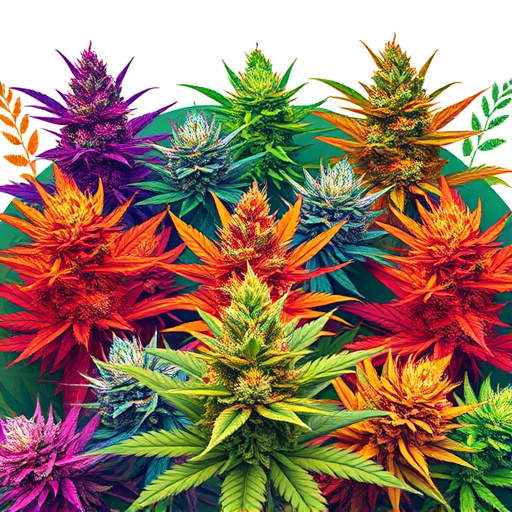
The vibrant colors associated with some marijuana strains, such as purple, red, and blue, are not just aesthetic; they’re a result of intricate chemical interactions influenced by environmental factors. Terpenes, aromatic compounds that give cannabis its distinct smells, play a significant role in these color variations. Different terpenes can interact with specific pigments present in the plant, leading to unique hues. For instance, myrcene, known for its earthy scent, can enhance the red and purple tones, while limonene, with its citrusy aroma, may suppress them.
Furthermore, environmental conditions like sunlight exposure, temperature, and nutrient levels impact pigment production. Plants grown in cooler temperatures often display more intense colors due to increased anthocyanin synthesis, a type of pigment responsible for reds and purples. Consistent light exposure also influences color development, with optimal lighting promoting the production of vibrant pigments that contribute to the colorful profiles of these marijuana strains.
Cultivating the Rainbow: Techniques for Growing These Unique Strains
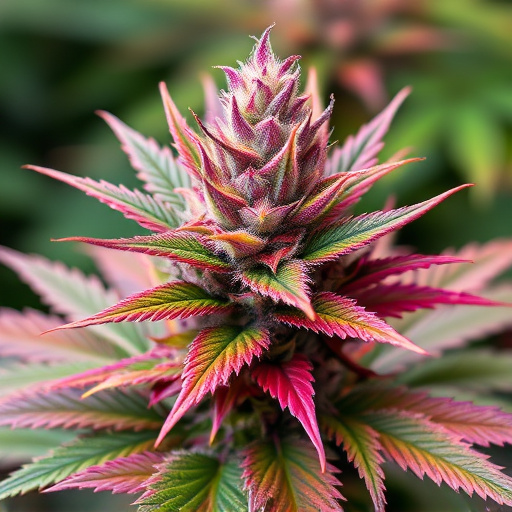
Cultivating unique and vibrant marijuana strains like purple, red, or blue varieties can be an exciting endeavor for dedicated growers. These colorful marijuana strains are not just visually appealing; they often boast distinct flavors and potent effects. Achieving these striking colors involves a combination of genetics, environmental factors, and meticulous care.
Growers can manipulate the growth conditions to enhance pigment expression in plants. Techniques such as controlled lighting, specific nutrient ratios, and precise temperature management play a crucial role in cultivating these rainbow strains. For example, some cultivators use LED lights tailored to specific wavelengths to encourage the production of anthocyanins, which contribute to red and purple hues. By experimenting with different growing methods and monitoring plant health closely, growers can produce remarkable specimens that showcase the beauty and diversity within the cannabis world.
The vibrant colors of purple, red, and blue in marijuana strains aren’t just eye-catching; they’re a result of complex genetic and environmental interactions. From the molecular basis of terpenes and pigments to cultivating techniques, understanding these factors reveals the secrets behind some of nature’s most captivating creations within the world of colorful marijuana strains. By exploring these aspects, cultivators can continue to enhance and diversify the spectrum of these unique and sought-after varieties.
